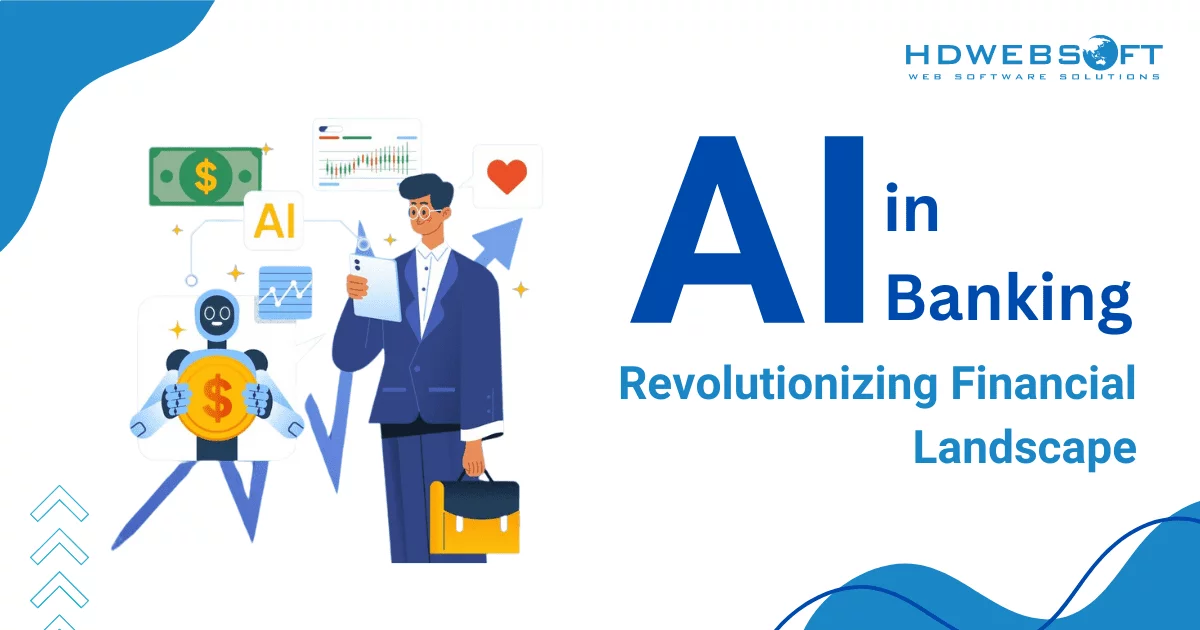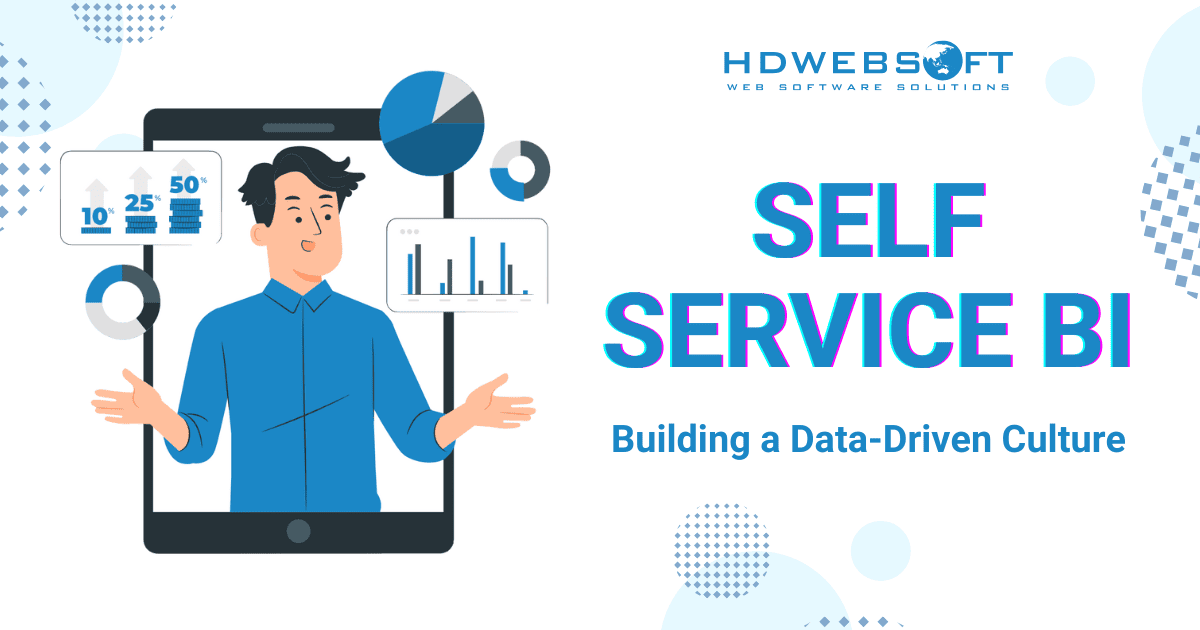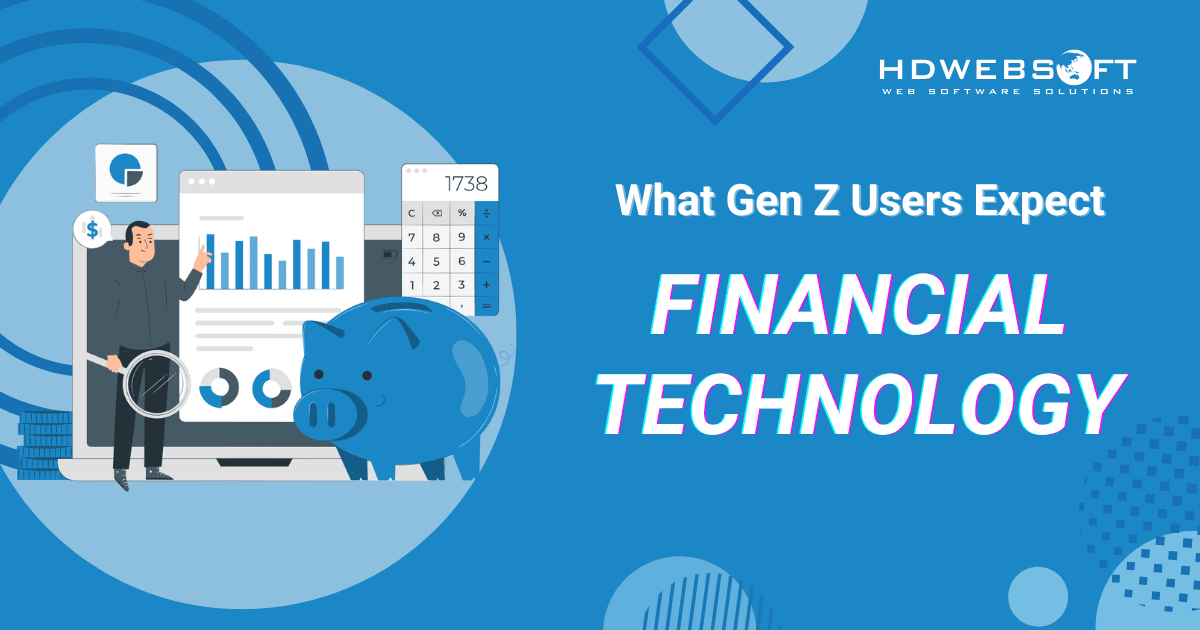
AI in Banking: Revolutionizing Financial Landscape
AI in banking integration has revolutionized finance, delivering increased efficiency, improved customer experience, and new financial features. As banks face increasing pressure to modernize and deal with tech-savvy customers who meet knowledge requirements, AI has emerged as an important tool for remaining competitive. This makes them faster, more customer-focused, and safer.
This blog will provide an overview of the AI banking market, its applications, and how it helps improve customer service. Furthermore, we will show some examples of banks using artificial intelligence in their processes.
- 1) Overview of the AI-powered banking market
- 2) How Finance AI Enhances Customer Services
- 3) Artificial Intelligence Application in Banking
- 4) Real-world AI in banking examples
- 5) Strategies for AI-first Bank Implementation
- 6) The Challenges for Implementing AI in Banking and Finance
- 7) Accelerate AI journey in banking with HDWEBSOFT
Overview of the AI-powered banking market

AI in banking is more than just a buzzword; it’s a transformative force revolutionizing the financial industry. It is integrated into banking operations to enhance efficiency, security, and customer service. This isn’t a minor upgrade but a fundamental shift in banks’ operations.
2023 was a significant year for Artificial Intelligence, particularly with the development of models like ChatGPT. This progress reinforces AI’s growing importance and suggests that it will continue to advance and evolve.
The leading players in the AI banking market include Amazon Web Services Inc., Cisco Systems Inc., Microsoft Corporation, SAP SE, and IBM Corporation. These companies offer a wide range of AI solutions, from customer service chatbots to complex fraud detection and risk management algorithms.
The AI in banking and finance market concerns not only the technology itself but also its influence on global economics. The market’s expansion, from $6.82 billion in 2022 to a projected $27.76 billion in 2027, reflects technological progress and a fundamental transformation in how financial services are perceived and provided.
How Finance AI Enhances Customer Services

In today’s rapidly evolving financial landscape, the necessity for banks to adopt an AI-centric strategy is becoming unmistakably clear. The industry is undergoing a significant transformation fueled by the widespread integration of AI in banking and finance.
The main reason for this change is the focus on enhancing customer experience, which is crucial in today’s competitive market. Finance AI plays a key role in accomplishing this by:
Analyzing Customer Data
AI systems can analyze vast amounts of customer data, including transaction histories, spending patterns, and personal preferences. This analysis enables banks to gain insights into individual customer needs and behaviors, allowing them to offer tailored products and services.
For instance, AI can identify a customer’s financial habits, suggest personalized budgeting advice, or recommend specific banking products that align with their financial goals. This level of personalization improves customer satisfaction and loyalty by making customers feel understood and valued.
Automating Routine Tasks
Artificial Intelligence automates many routine tasks, such as processing transactions, managing accounts, and handling customer inquiries. By taking over these repetitive tasks, AI in banking frees human agents to focus on more complex issues requiring personalized attention. Automated systems can handle thousands of customer interactions simultaneously, ensuring that customers receive quick and accurate responses to their queries. This efficiency not only enhances the customer experience but also reduces operational costs for banks.
Conversational Banking Experience
Perhaps the most significant way finance AI enhances customer services is through the creation of a conversational banking experience. For instance, AI-driven chatbots and virtual assistants, such as Bank of America’s Erica, provide customers with an interactive and responsive service that is available 24/7.
Furthermore, these AI tools can engage in natural language conversations with customers, answer questions, perform transactions, and provide financial advice. By effectively simulating human-like interactions, Artificial Intelligence offers customers a more intuitive and engaging way to manage their finances. Thereby, banking is more accessible and user-friendly.
Artificial Intelligence Application in Banking
The banking and finance sector is undergoing a significant transformation due to the integration of AI and machine learning (ML). AI’s applications in banking are wide-ranging and substantially influence various aspects of the industry. This comprehensive analysis focuses on key areas where AI is revolutionizing banking and finance:
Fraud Detection and Prevention
One of the most critical applications of AI in banking is fraud detection and prevention. First, AI algorithms analyze vast amounts of transaction data in real-time to identify patterns indicative of fraudulent activities. Machine learning models can detect anomalies and flag potentially suspicious transactions, significantly reducing the risk of fraud. Moreover, AI-driven fraud detection systems learn from past data to improve their accuracy over time, making them more effective than traditional rule-based systems.
Data Collection and Analysis
Artificial Intelligence plays a vital role in collecting and analyzing data within the banking sector. By effortlessly processing large datasets from various sources, AI can provide valuable insights into customer behavior, market trends, and operational efficiencies.
Consequently, banks use AI to analyze this data and gain a deeper understanding of their customers. This can be leveraged to improve decision-making, optimize processes, and develop new products and services. In fact, the ability to analyze data quickly and accurately is crucial for banks to remain competitive in a fast-paced market.
Credit Scoring and Risk Assessment
AI in banking and finance has transformed credit scoring and risk assessment by making these processes more accurate and efficient. Traditional credit scoring models rely on limited data points, but this technology can analyze a broader range of factors, including social media activity, transaction history, and alternative data sources. This allows for a more comprehensive evaluation of an individual’s creditworthiness, leading to better-informed lending decisions.
Additionally, finance AI can continuously monitor and assess risk, enabling banks to adjust credit terms or take preventive measures if a customer’s financial situation changes.

AI in banking provides a more accurate evaluation of an individual’s credit score.
Customer Service and Support
AI-driven chatbots and virtual assistants are increasingly being used in banking to enhance customer service and support. These AI tools can handle a wide range of tasks, from answering customer queries to processing transactions, all without human intervention. In particular, the adoption of voice chatbots has gained momentum. It allows customers to interact with their banks through natural language, making the experience even more frictionless and user-friendly.
Furthermore, artificial intelligence systems can learn from interactions and become more efficient and effective over time. Finance AI improves customer satisfaction and reduces the workload on human agents by providing instant, 24/7 support.
Automated Trading and Investment
In the realm of trading and investment, AI in banking is used to automate processes and optimize decision-making. AI-driven trading algorithms can analyze market data in real-time, identifying patterns and executing trades at optimal times. This automation reduces human error and allows for high-frequency trading, which can lead to higher returns. AI is also used in robo-advisors, which provide automated investment advice based on individual financial goals and risk tolerance.

AI in banking automates real-time data of the market and optimizes the investment desicion.
Financial Advice and Personalization
Artificial Intelligence in finance is revolutionizing financial advice by providing personalized recommendations tailored to individual needs. By analyzing customer data, AI systems can offer targeted advice on budgeting, saving, investing, and spending. This level of personalization helps customers make better financial decisions and enhances their overall experience with the bank.
In addition, AI-powered personalization also extends to marketing, where banks can offer customized products and services based on individual preferences and behaviors.
Real-world AI in banking examples

AI in banking has rapidly evolved from a concept to a reality, with several financial institutions successfully integrating AI technologies to enhance their operations and customer service. Here are three examples of real-world AI applications in banking:
JPMorgan Chase – COIN (Contract Intelligence)
JPMorgan Chase has implemented an AI-powered system known as COIN (Contract Intelligence) to streamline the process of reviewing legal documents. Specifically, COIN uses machine learning to analyze and extract vital information from complex contracts, which previously required extensive manual effort.
As a result, this system has significantly reduced the time needed for document review. It handles $1 billion worth of transactions every day. Moreover, by automating these routine tasks, COIN improves efficiency and reduces the risk of human error in contract analysis.
HSBC – Anti-Money Laundering (AML)
HSBC has deployed AI in banking to enhance its anti-money laundering (AML) efforts. The bank uses artificial intelligence and big data analytics to monitor millions of transactions daily, identifying suspicious activities that could indicate money laundering. This AI-driven system has improved HSBC’s ability to detect financial crimes in real-time, allowing the bank to respond swiftly and accurately. AML AI detects suspicious activity 2-4 times more effectively than the previous system while reducing false alerts by 60%. The use of finance AI strengthens compliance and helps protect the bank and its customers from financial fraud.
Bank of America – Erica
Bank of America’s virtual assistant, Erica, is a prime example of how AI in banking can enhance customer service. Erica uses natural language processing (NLP) and ML to interact with customers through voice or text. The AI assistant helps customers with various tasks, including checking balances, making payments, and providing personalized financial advice.
Since its launch, Erica has handled over 2 billion customer interactions, demonstrating the growing reliance on AI-driven customer service solutions.
Strategies for AI-first Bank Implementation
Implementing an AI-first strategy in the banking sector requires careful planning and execution to unlock the full potential of AI in banking. Here are some key strategies to guide banks through this transformation:
Uncover AI’s Potential in Banking
To begin with, a bank should carefully assess its current ability to utilize AI banking solutions. This involves understanding existing challenges and recognizing potential areas where AI can be implemented.
Banks can benchmark themselves against competitors to gain insights into their relative position in adopting finance AI.
Furthermore, identifying trends and use cases of artificial intelligence in banking helps estimate its potential impact on revenue, cost, and overall operational efficiency.
Establish the AI Vision and Goals
Defining a clear AI vision and setting ambitious goals are crucial for aligning the organization around the AI-first strategy. Banks must articulate how AI will fit into their overall business strategy and what they aim to achieve. A well-defined vision ensures that all stakeholders are on the same page and committed to the AI-first strategy, providing a foundation for successful implementation.
Develop the AI Roadmap and Governance
An AI roadmap outlines the specific steps and priorities for implementing the bank’s AI vision. Each artificial intelligence initiative should have clear roles and responsibilities to ensure accountability and progress tracking.
Equally important, robust governance for AI in banking must be established, addressing data quality, security, privacy, ethics, and risk management. This governance framework is vital for sustainable and responsible AI deployment.
Build AI Competencies
Building AI competencies within the organization is critical for sustaining an AI-first approach. Banks should invest in talent development, ensuring that their teams have the necessary skills and expertise in AI technologies. This may involve training existing employees, hiring AI specialists, or partnering with external AI providers.
Additionally, developing a culture that embraces AI and innovation is essential for fostering creativity and encouraging experimentation with new AI-driven solutions.
Monitor and Track AI Performance
Once AI initiatives are in place, it is essential to monitor and evaluate their performance continuously. Banks should establish key performance indicators (KPIs) to measure the impact of AI in banking on various aspects of their operations. Ideally, rigorous AI testing can be used to identify and address potential issues before they impact the bank’s operations.
Plus, regularly reviewing these metrics allows banks to identify areas for improvement and make necessary adjustments to their AI strategies. It also ensures that AI initiatives deliver the desired outcomes and contribute to the bank’s overall objectives.
The Challenges for Implementing AI in Banking and Finance
Implementing AI in banking and finance offers transformative benefits, but it also comes with significant challenges. These challenges must be carefully navigated to ensure successful AI integration that enhances banking operations without unintended consequences.
Job Loss and User Acceptance
One of the most significant challenges posed by AI in banking is the potential for job displacement. Many traditional banking roles may become obsolete as AI automates routine tasks like data entry, customer support, and transaction processing. This can lead to workforce reductions, which, in turn, raises concerns about job security and employee morale.
On top of that, the adoption of AI requires user acceptance, both from employees and customers. Employees may resist AI due to fears of redundancy, while customers may be wary of interacting with AI-driven services instead of human agents.
Privacy and Security Risks
The integration of finance AI also heightens privacy and security risks. AI systems rely on vast amounts of data to function effectively, which can include sensitive customer information. The use of private data raises concerns about data breaches, unauthorized access, and misuse. Moreover, artificial intelligence systems can be targeted for cyberattacks, where hackers exploit vulnerabilities to manipulate or steal data.
Ethical and Bias Concerns
AI algorithms are only as good as the data they are trained on, and biased data can lead to biased outcomes. In AI in banking, this can result in unfair lending practices, discriminatory credit scoring, or biased customer service interactions.
Addressing ethical concerns and eliminating bias in AI models is a complex challenge that requires continuous monitoring and improvement. Banks must implement transparent AI systems, regularly audit algorithms for fairness, and ensure that AI decisions are explainable and accountable.

Improper-trained AI in banking leads to bias outcomes, which is bad for bank business.
Integration with Legacy Systems
Many banks operate on legacy systems that are not easily compatible with modern technologies. Integrating AI banking with these outdated systems can take time and effort, requiring significant time and investment to modernize infrastructure. The complexity of this integration can slow down the implementation process and limit the ability to fully leverage AI’s capabilities.
Preserving the Emotional Human Touch
While AI enhances efficiency, it can also reduce the emotional connection between banks and their customers. The human touch is crucial in banking, especially in scenarios like financial advising, handling sensitive customer issues, or providing reassurance during stressful times.
As a result, over-reliance on AI may lead to impersonal interactions, which could negatively impact customer relationships. Banks must find a balance between automation and maintaining human engagement to ensure customers feel valued and understood.
Accelerate AI journey in banking with HDWEBSOFT
With our deep expertise in cutting-edge technology and the banking industry, we offer custom finance software solutions that drive innovation and efficiency. Our team of experts works closely with banks to develop and implement AI strategies that align with their unique requirements, ensuring a smooth transition to AI-enhanced banking operations. By partnering with HDWEBSOFT, you’ll gain a strategic advantage in the fast-paced world of AI in banking.









